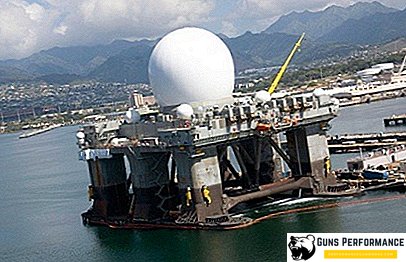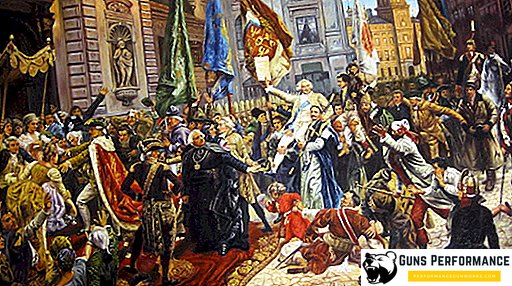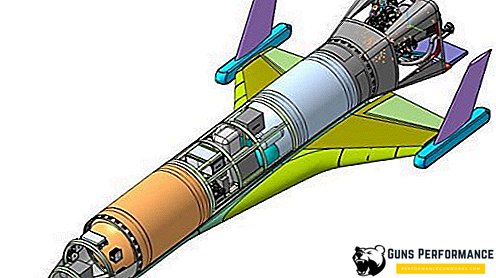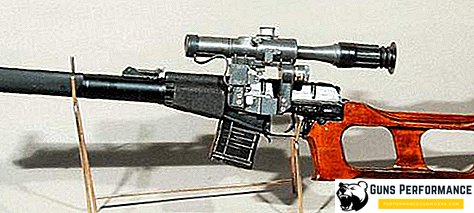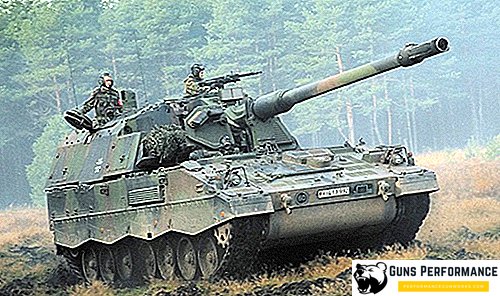Boeing 737 - narrow-body passenger aircraft, created in 1967 by the corporation Boeing.
The location of the best seats in the cabin
The passenger cabin of the aircraft Boeing 737 is able to accommodate from 100 to 215 passengers (depending on the layout of the aircraft and its modifications). The most common option is to have two classes (business and economy), so it is worth considering it in more detail. In this case, this is the salon Boeing 737-800.
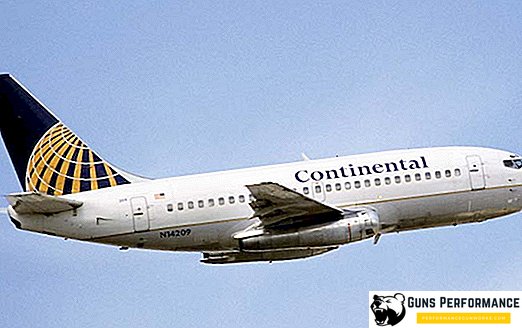
As shown in the diagram, the business class cabin is equipped with 4 rows of seats. There is a fairly wide central aisle, and the seats are arranged according to the “2-2” pattern. Due to this, a considerable width of chairs in business class is provided. In general, business class seats are distinguished by very soft and comfortable chairs, the distance between which is sufficient so that you can recline the backrest to a sufficient angle and turn the seat into comfortable beds. There is enough space to not worry about legroom, even for tall people. The menu for passengers of this class is elegant and has a wide selection of drinks and dishes.
The best for the business class are the places marked with letters A and G in rows 2 and 3. Their convenience is explained by the fact that they are located in the middle of the cabin (and not in front or behind) and at the portholes, which means that the passengers sitting here guaranteed a great view from a height.
However, it should be remembered that for some places in the business class there are certain drawbacks. First of all, we are talking about places in the row at number 1. Their main disadvantage is that they are located near the toilet and utility rooms. Consequently, all the shortcomings associated with such a “neighborhood” will be experienced by the first-row passengers in full. Also, not the best for the business class will be the places located in the fourth row (according to the scheme of the passenger cabin). The thing is that they are closely adjacent to the thin partition that separates the business class from the noisier economy class. This means that the noise from the economy class is likely to be heard by passengers in the seats of this series, which, of course, will not contribute to proper rest in flight. In short, when booking tickets, it is necessary to take into account these features and buy tickets for rows 1 and 4 only if there are simply no tickets to other rows.

Next to the business class seats is an economy class lounge. Chairs are located on the sides of a slightly narrower, than in a business class, central passage according to the “3-3” scheme. Economy class seats are ranked (as shown in the diagram) with numbers from 10 to 33. The chairs here are also quite soft and comfortable, and their backs are capable of reclining at an angle of up to 45 degrees (depending on the aircraft model). The distance between the seats is approximately 80 cm.
The best in economy class are places marked with letters B, C, D and E in the row at number 18. Their convenience is explained very simply: the chairs are located right next to the emergency exits. Therefore, chairs located in front of the 18 side by side, as a rule, have very limited backward deflection angles (or are not rejected at all), and the distance to them is somewhat larger. This is due to the need in the event of an emergency to ensure passengers unimpeded exit from the aircraft. However, this does not apply to the seats of the 18th row, indicated by the letters A and F. The fact is that the seats located at the portholes are slightly “slanted” to the sides, which makes them somewhat uncomfortable. Also quite good (but with reservations) are places in the 17th row. They are also located near emergency exits, therefore, there is also more legroom, not to mention the small angles of reclining of the backs in front of the located seats. However, on the other hand, due to the fact that these places are located in front of another emergency exit, their backs practically do not recline.

Particular attention should be paid to the places located in row 10. Before them there is a partition dividing business and economy classes. Because of this, there is more legroom, and no one will be able to deflect a chair located in front, thereby limiting your space. Another advantage is that the distribution of food begins from these places, which provides a large assortment of food and drinks for the passengers sitting here. However, it is just in front of these places that special cradles for infants are installed, which can create a number of inconveniences - after all, not every person will be able to rest easy for a few hours when children are screaming or crying nearby. In addition, for the chairs of the tenth row, folding meal tables are mounted in the armrests, which can also be somewhat inconvenient.
Not the best choice would be the places of the row at number 16 (according to the scheme). They are located in front of the emergency exit, and their backs have a limited tilt angle. The least attractive option for an economy class aircraft Boeing 737 are places located in the 33 series, especially indicated by the letters C and D according to the diagram. These places are located directly by the toilets, which means that queues of passengers will accumulate here. The sound of slamming doors and vanity can seriously spoil the impression of a flight and a liner. To avoid this, you need to carefully select the place when booking and take into account the features of the cabin.
History of Boeing 737
In the early 1960s, McDonnell Douglas and the British Aircraft Corporation worked on small-capacity, short-haul passenger aircraft. Initially, Boeing Corporation in this competitive struggle had almost no chance. In addition, the creation of a new passenger aircraft, known as the Boeing 737, began a few years later than its competitors. To speed up the development of the liner, the technologies used in the construction of the Boeing 707 and Boeing 727 were used. However, a number of tests of the hull of the new aircraft showed flaws in the design, and some of its parts (for example, the wing) made fundamentally new.
The first customer of the Boeing 737 was the German airline Lufthansa. It is thanks to her that the number of passenger seats of the liner increased from 60, initially planned, to 103.

In 1965, the Boeing 737 passenger liner was announced completed, and two years later the first aircraft was handed over to the customer. Commercial operation of the model began in 1968.
During the production of this liner, lively debates and discussions regarding the number of crew members for such an aircraft did not subside. Thus, trade union organizations sought recognition of the fact that an aircraft of this class should have a crew of only 3 people (three pilots or two pilots and a flight engineer). This decision, of course, was very disadvantageous to airlines because of the need to maintain a larger staff of pilots and increase costs.
After the meeting of ALPA (Air Line Pilots Association), a resolution was adopted. She envisaged the management of a Boeing 737 crew of 3 people. At the same time, the Federal Aviation Administration of the USA allowed Boeing Corporation to preliminarily have 2 pilots in the crew for its aircraft. Nevertheless, the disputes lasted for a long time and, to a certain extent, “scared away” a number of potential customers from the Boeing 737, thereby playing into the hands of competitors.

In the 70s of the 20th century, the popularity of the new Boeing 737 airliner (then he had two modifications: 737-100 and 737-200) grew rapidly, and soon the number of orders for the aircraft exceeded thousands, especially on the 737-200 model, which had elongated body and increased passenger capacity.
In the 1980s, the ship underwent major changes. The most significant of these was the installation of new turbofan engines, as well as a change in the shape of the nacelles for them from round to slightly "oblate". This is due to the small clearance of the Boeing 737, because of which during takeoff or landing there was a constant threat of engine damage. The cabin of the liner was equipped with the latest onboard electronics systems. In 1984, it was developed and put into mass production and a new modification - Boeing 737-300.
However, after the 70s and 80s of the 20th century, when the Boeing 737 unconditionally dominated the sector of narrow-body short-haul aircraft, the position of the airliner was seriously undermined by the A320 passenger aircraft released by Airbus. In this regard, the Boeing Corporation decided to create a new family of the 737th, called NG (New Generation - a new generation). In this line of aircraft includes modifications such as: Boeing 737-600, 737-700 and 737-800. Later, the Boeing 737-900 model developed in 2001 joined these models. The main feature of passenger liners "new generation" has become an improved system of on-board electronics, a new wing design, more comfortable cockpit and passenger compartment, as well as reduced weight and, as a result, the best flight performance.

As of 2014, the Boeing Corporation carried out more than 8,000 deliveries of an aircraft of the 737 family, and the total number of orders for the airliner exceeded 12,000. Thus, the Boeing 737 can be safely called the most massive passenger plane in history. It is also worth noting that the mass production of the 737 continues to this day.
Aircraft modifications
Aircraft Boeing 737 are divided into 4 families, which, in turn, are represented by various modifications.
The Original family is represented by modifications 737-100 and 737-200.
- Boeing 737-100 - the first modification of the aircraft with the number of passenger seats up to 103. Produced mainly in 1965-1969.
- Boeing 737-200 - extended by 2 meters (compared with the Boeing 737-100) modification, which had increased passenger capacity and flight range. Produced from 1967 to 1988.
The Classic family is represented by modifications 737-300, 737-400 and 737-500.
- Boeing 737-300 - version of the aircraft with increased (compared with the Boeing 737-200) fuselage length and passenger capacity. Commercially operated since 1984.
- Boeing 737-400 - modification with an even more elongated body, which caused a serious processing of the air conditioning system in the cabin. Boeing 747-400 has an increased capacity.
- Boeing 737-500 - a model that is essentially a shortened version of the modification 737-300. Flight range increased to 5200 km.
The Next Generation family is represented by modifications 737-600, 737-700, 737-800 and 737-900.
- Boeing 737-600 - the first modification of the family. In fact, it is a replacement for the Boeing 737-500 model, as it has exactly the same characteristics. However, in the future, due to inefficiency, the plane was unpopular.
- Boeing 737-700 - modification with an increased number of passenger seats (compared with 737-600) and increased flight range. There is also a model Boeing 737-700ER (Extended Range - extended range).
- Boeing 737-800 - liner, intended as a replacement for the Boeing 737-300. It has an increased capacity (up to 190 passengers) and an elongated fuselage.
- Boeing 737-900 - modification of the aircraft, which has the longest body in the family (42 meters). The number of passenger seats - up to 190.
Also on the basis of the Boeing 737-900 was created modification 737-900ER with increased passenger capacity (up to 215 people) and increased flight range.
The 737 MAX family is currently being developed, it is assumed that it will be represented by 737 MAX 7, 737 MAX 8 and 737 MAX 9 models.

Overview of the Boeing 737 and its characteristics
| Boeing 737-100 | Boeing 737-200 | Boeing 737-300 | Boeing 737-400 | Boeing 737-500 | Boeing 737-600 | Boeing 737-700 | Boeing 737-800 | Boeing 737-900 | Boeing 737-900ER | |
| Length m | 28,6 | 30,5 | 33,3 | 36,4 | 31 | 31,2 | 33,6 | 39,5 | 42,1 | 42,1 |
| Wingspan, m | 28,4 | 28,9 | 34,3 | |||||||
| Height, m | 11,2 | 11,1 | 12,7 | 12,6 | ||||||
| Fuselage width, m | 3,8 | |||||||||
| Interior width, m | 3,5 | |||||||||
| Cabin height, m | 2,2 | 2,1 | 2,2 | |||||||
| Maximum number of places | 103 | 133 | 149 | 168 | 132 | 130 | 148 | 189 | 189 | 215 |
| Cruising speed, km / h | 817 | 807 | 852 | |||||||
| Minimum speed in flight, km / h | 350 | 350 | 330 | |||||||
| Flight range, km | 2 592 | 3 518 | 5 000 | 5 200 | 5 648 | 6 230 | 5 765 | 5 800 | 5 925 | |
| Ferry range, km | 3 148 | 4 444 | 6 670 | 5 000 | 5 200 | 5 648 | 6 230 | 5 765 | 5 800 | 5 925 |
| Ceiling, m | 10 670 | 10 700 | 11 300 | 11 300 | 12 500 | 12 500 | 12 500 | 12 500 | 12 500 | |
| Runway length, m | 1 290 | 2 058 | 2 012 | 2 356 | 1 860 | 1 799 | 1 677 | 2 241 | 2 408 | 2 450 |
| Run length, m | 1 180 | 1 350 | 1 400 | 1 540 | 1 360 | 1 340 | 1 430 | 1 630 | 1 700 | 1 750 |
| Maximum take-off weight, kg | 43 998 | 45 359 | 56 472 | 62 823 | 52 390 | 56 245 | 70080 | 79015 | 74 389 | 74 389 |
| Empty weight, kg | 26 581 | 27 170 | 31 479 | 33 189 | 31 311 | 36 378 | 37 648 | 41 413 | 42 901 | 44 677 |
| Fuel reserve, l | 13 399 | 13 096 | 20 102 | 20 102 | 20 102 | 26 022 | 26 022 | 26 022 | 26 022 | 26 025 |
| Fuel stock, kg | 10 758 | 10 515 | 16 141 | 16 141 | 16 141 | 20 894 | 20 894 | 20 894 | 20 894 | 20 894 |
| Specific fuel consumption, g / pass.-km | - | - | 25,5 | 20,9 | 25,5 | - | - | - | - | - |
| Engines | P & W JT8D-7 | P & W JT8D-9 / 9A | CFM56-3B1 | CFM56-3B2 | CFM56-3B1 | CFM56-7B18 | CFM56-7B20 | CFM56-7B24 | CFM56-7B24 | CFM56-7B24 |
| CFM56-7B20 | CFM56-7B22 | CFM56-7B26 | CFM56-7B26 | CFM56-7B26 | ||||||
| CFM56-7B22 | CFM56-7B24 | CFM56-7B27 | CFM56-7B27 | CFM56-7B27 | ||||||
| CFM56-7B26 | ||||||||||
| CFM56-7B27 | ||||||||||
| Traction | 2 × 5,7 | 2 × 6,6 | 2 × 9,1 | 2 × 10 | 2 × 9,1 | 2 x 8.9 | 2 x 9.3 | 2 x 11.0 | 2 x 11.0 | 2 x 11.0 |
| 2 × 9,3 | 2 x 10.3 | 2 x 11.9 | 2 x 11.9 | 2 x 11.9 | ||||||
| 2 x 10.3 | 2 x 11.0 | 2 × 12,4 | 2 × 12,4 | 2 × 12,4 | ||||||
| 2 x 11.9 | ||||||||||
| 2 × 12,4 | ||||||||||

Conclusion
Boeing 737 is the most popular line of passenger liners in the world, produced from 1968 to our days. The longevity of this airliner in mass production is primarily due to the large number of its modifications that are being developed today, which will certainly provide him with a long life in the airline industry.




